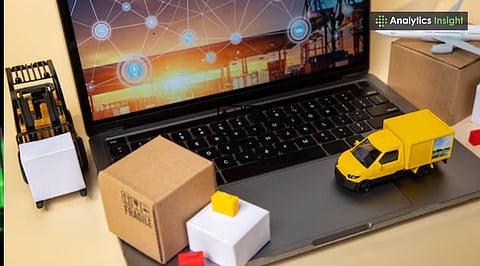

Smarter forecasting and routing reduce waste and improve delivery speed, enabling businesses to match demand with precision.
Automation and real-time visibility reduce errors and downtime, giving companies tighter control over warehouses, yards, and logistics.
Resilient and sustainable supply chains are built by blending technology with human judgment, creating agility and long-term strength.
Supply chain management used to be a patchwork of paper, phone calls, and e-mails. Today, they feel more like living systems. Data flows within the system, responding to disruptions and learning from what’s happening during the process. This changes how teams work, how customers wait, and how companies compete. Let’s take a look at how artificial intelligence is changing supply chain management through actionable tips, calculations, and more.
Forecasting is moving beyond spreadsheets. By reading patterns in events, weather, and buying behavior, businesses are turning demand prediction into a science rather than a guess.
Quick start: clean up 12–24 months of sales data and run a pilot on your top 20 SKUs.
Routing is no longer static. Delivery plans adjust in real time for traffic, road closures, and tight delivery windows. That means fewer late deliveries and less fuel burned. Carriers and last-mile teams get routes that make sense for the day, not yesterday.
Quick start: add telematics to a small fleet and compare route time and fuel use for 30 days.
When every partner, truck, and depot’s reports fall into the same dashboard, surprises drop. Digital records and connected trackers replace the ‘where is it now?’ phone calls. That visibility helps you spot bottlenecks early and tell customers the truth.
Quick start: unify tracking feeds into one dashboard and set three critical alerts for delays, temperature excursions, and missing scans.
Smart cameras, scanners, and guided workflows speed picking and reduce human error. AI in supply chains handles repetitive tasks while people focus on exceptions and quality checks. The results include faster fulfillment and fewer returns.
Quick start: test pick-path guidance on one shift to measure picks per hour and accuracy.
Finding the right trailer used to cost hours. Sensors now report which trailers are where and which are ready to move. That saves driver time and keeps schedules tight.
Quick start: tag 10 trailers and log time saved per pickup over two weeks.
Sensors on equipment and vehicles collect simple signals: temperature, vibration, and hours run. Those signals let teams schedule maintenance before a breakdown happens. This makes for less downtime, lower emergency repair spending, and better on-time delivery.
Quick start: instrument the single most critical asset and compare downtime before and after.
Invoices, freight bills, and customs paperwork slow everything down. Digital tools extract the needed fields, validate charges, and flag mismatches. Finance teams close faster, and disputes drop drastically.
Quick start: run freight invoice validation on a single lane and measure dispute reduction.
When decisions use live data, you can shift suppliers, routes, and inventories quickly. That reduces risk when a factory closes or a storm hits. The same optimization that cuts wasted miles also trims emissions and packaging waste. Two wins at once.
Quick start: calculate emissions for one route before and after route optimization to show the quick impact.
Technology can crunch numbers and show choices in seconds, but it can’t make the tough calls. That’s still up to the buyers, planners, and operations teams who know the business. They use the insights to negotiate smarter, plan buffers, and handle suppliers. The real power shows when sharp tools meet human expertise.
Also Read: Revolutionizing Retail: AI-Powered Supply Chain Innovation
Technological advancements in supply chains are not meant to impress; it is all about the outcome. Its true value lies in giving teams clearer options, reducing inefficiencies, and refocusing attention on customer needs. The journey should start small, prove itself with wins, and then grow. A 90-day plan can chart the path, with pilots and metrics that fit your business model. Users are advised to maintain oversight and supervision and not become overly reliant on the capabilities of artificial intelligence.
